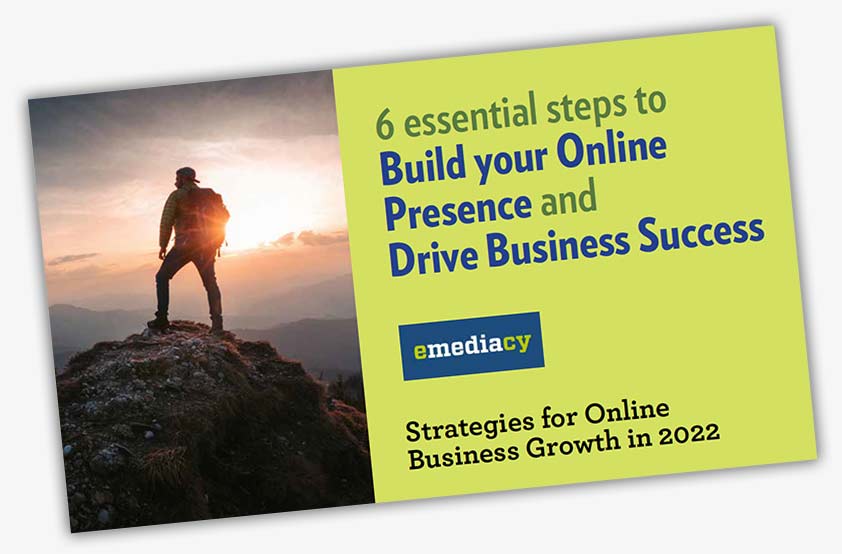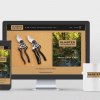A website content marketing strategy is the recipe for success.
But how do you develop one?
In this blog post, I’ll discuss what a strategic site content marketing strategy entails, share best practices to implement in your organization and provide steps on how to put together a good plan that will lead you down the path of success.
What is Content Marketing Strategy?
A content marketing strategy is a plan for how you will create, publish, and promote information that’s of value to your audience. A sound content marketing strategy includes creating high-quality content that’s visible on the search engine results pages (SERPs). Content marketing can generate three times more leads than paid advertising. A content marketing strategy is a bait for prospective customers.
Why do you need a web content strategy? What are some examples of high-converting content marketing strategies?
Content marketing strategies and web content strategies can be divided into two broad categories:
– Social Media Content Marketing Strategies
– Audience Development Content Marketing Strategies
It is important to have a web content strategy because it can help businesses achieve their goals. Creating engaging and beneficial content for customers can help resolve pain points and improve customer satisfaction. A well-formed web content strategy can help businesses create a plan for producing, managing, and distributing their content.
Why is Content Marketing Strategy important?
- A content marketing strategy helps to develop a plan for achieving specific content marketing goals.
- The right content marketing strategy can influence the success of a content marketing plan.
- An effective content marketing strategy will adapt a content marketing plan to changes in the industry landscape.
Emediacy is an inbound marketing agency that can help craft a relevant, valuable message that your potential customers will want to see. Emediacy’s inbound marketing services can will help build your brand, grow your sales, and create a loyal customer base. Learn more about Emediacy’s inbound marketing packages. Schedule a consult today.
Types of Content Marketing
Blog Posts
Blog posts are a great way to inform, educate, and build your audience. You can use them to share your thoughts and ideas on a variety of topics, and they can be a great way to engage with your readers.
One of the best things about blog posts is that they can be written in either a formal or conversational tone. This makes them pretty universal – you can cater your blog content to whatever audience you’re trying to reach.
When it comes to using blog posts for content marketing, there are endless possibilities. You can use them to drive traffic to your website, build relationships with customers and prospects, generate leads, and much more. If you’re looking for a versatile content marketing tool, look no further than the humble blog post!
Ebooks
An ebook is a type of content that is similar to a blog post, with text creation and review, and design by a graphic designer. Ebooks can be used in content marketing to create an engaging and informative product.
Ebooks are an excellent way to exchange valuable information for a visitor’s contact information. They can be used to explain points that weren’t covered in a regular blog post, providing more in-depth information. Additionally, ebooks are an efficient way to grow your lead base and increase your sales.
Case Studies
A case study is a story that illustrates how your product or service helped a specific business achieve success. Case studies can be presented in different formats, such as blog posts, ebooks, podcasts, and infographics. The purpose of a case study is to demonstrate how your solution works and the benefits it provides.
When used in content marketing, a case study can show potential customers how your product or service has helped other businesses succeed. This can help build trust and confidence in your company. A case study can also be used to show how a company operates and the benefits it offers consumers
Infographics
An infographic is a graphic representation of data or information. They are often used to communicate complex information quickly and easily. Infographics can be used in content marketing to break down complicated topics, data sets, or processes into an easy-to-understand format. This can help engage readers and make your content more shareable.
Videos
Videos are an excellent way to engage your audience and offer big ROI. While they require more time and resources than written content, the investment is worth it in the long run. The featured tool offers a free video marketing starter pack which includes templates for creating videos, as well as tips and tricks for making them effective.
Podcasts
Podcasts have quickly become a popular way to reach a wide audience with audio-only content. This type of content is often easier to consume than text, making it perfect for busy people who want to stay informed.
There are many ways podcasts can be used for content marketing. For example, they can be used to share solutions to common problems or target an audience’s specific pain points. Additionally, podcasts offer an intimate and personal way to connect with your audience, which can build trust and loyalty.
If you’re considering using podcasts as part of your content marketing strategy, be sure to check out Perfectly Content – a great resource for anyone wanting to learn more about this topic.
- Social Media
Social media is a great way to reach out to more people at once and start building relationships with your audience. You can share your content in a number of ways on social media, including directly to your page or others’ pages. Be sure to target your content specifically to the people you want to reach. Use cross-posting and tagging to make sure your content is seen by as many people as possible.
Don’t forget to share this post!
Sharing relevant and useful content is an important part of content marketing. Sharing increases the popularity of the content and can lead to more visitors.
Emediacy is an inbound marketing agency that can help craft a relevant, valuable message that your potential customers will want to see. Emediacy’s inbound marketing services can will help build your brand, grow your sales, and create a loyal customer base. Learn more about Emediacy’s inbound marketing packages. Schedule a consult today.
What are some examples of high-converting content marketing strategies?
- Creating content strategy goals is a great way to get your message out there. By writing for a niche audience, you can create content that is both helpful and informative.
- Offering exclusive content is another great way to get your message across. By providing helpful content, you can attract a wider audience and keep them coming back for more.
- Using social media to get your message out there is also a great way to reach a larger audience. You can use platforms like Twitter, Facebook, and LinkedIn to share your content and build up a following.
- Creating original content
- Writing for a niche audience
- Creating helpful content
- Producing video content
- Using social media to get your message out
- Offering exclusive content
- Creating original content
- Writing for a niche audience
How can you create a draft of your content?
A social media content strategy is a plan that you use to create, publish, and promote your content. To create a draft, you need to come up with a plan. You can use Microsoft Office, Google Docs, or any other program with which you’re comfortable. Alternatively, write your drafts in WordPress or your preferred content management system. After you write your draft, let it sit for a day or two before you revise and edit. Alternatively, send it to a trusted editor who can catch mistakes and point out jumps in logic and other issues.
How can you make your content more actionable?
If you want your content marketing campaigns to result in specific actions from your readers, you need to make them actionable. You can do this by adding calls to action, using active voice, and using strong verbs.
Calls to action encourage readers to take a specific action after reading the content. They should be clear and concise and tell the reader exactly what you want them to do. For example, if you want them to sign up for your newsletter, include a call to action that says “sign up now.”
An active voice speaks to readers as if they are already taking the desired action. This makes the content more personal and engaging. For example, instead of saying “our newsletter will keep you up-to-date,” say “you’ll stay up-to-date with our newsletter.”
Strong verbs also make content more engaging by describing actions that readers can take. For example, instead of saying “click here,” say “discover more.” This not only sounds better, but it also tells the reader what they can expect when they click on the link.
How do you identify your target audience for better marketing?
In order to identify your target audience for website content marketing strategy, you will need to first focus on who your audience is. You will then need to analyze the psychographics of your audience and finally focus on the needs and motivations of your target audience.
Where should customer testimonials be placed on a website (+ examples)?
Customer testimonials are a great way to show potential customers the benefits of your product or service. When placed at the bottom of the funnel, near the bottom of the page, they can be an effective tool for converting visitors into customers.
To make customer testimonials more effective, use a large font size and boldface to make them stand out. You can also use a video or image to accompany the testimonial. Be sure to credit the customer and link back to their website or blog.
Case studies are another great way to highlight the applications and benefits of your product or service. By showcasing how your product or service has helped others in similar situations, you can demonstrate its value and build trust with potential customers.
Content Marketing Strategy Examples
In order to develop a strategic website content marketing strategy, you will first need to define your target audience. Once you know who your target audience is, you can begin to understand their needs. Once you understand their needs, you can identify the purpose of your content. It is important that your content is relevant and useful to your target audience. You can monitor the success of your content by monitoring its engagement metrics.
Emediacy is an inbound marketing agency that can help craft a relevant, valuable message that your potential customers will want to see. Emediacy’s inbound marketing services can will help build your brand, grow your sales, and create a loyal customer base. Learn more about Emediacy’s inbound marketing packages. Schedule a consult today.














